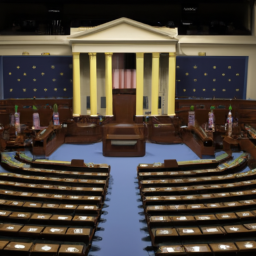Introduction
During the late 1800s, the United States found itself in a political stalemate where divisions between political parties were deeply entrenched. This period witnessed a remarkable balance of power between the Democrats and Republicans, both vying for control of Congress. In this article, we will delve into who dominated both houses of Congress during this time, shedding light on the key players and their impact on American politics.
Congressional Structure in the Late 1800s
The United States Congress is comprised of two chambers - the House of Representatives and the Senate. Each chamber has its unique roles and responsibilities, with members elected by the American citizens. The dynamics within these chambers greatly influenced the political landscape of the late 1800s.
Party Landscape in the House of Representatives
In the House of Representatives, the Democrats and Republicans were locked in a fierce battle for control. While the Democrats held the majority throughout most of the 1800s, the Republicans saw a gradual rise in their influence and representation. The shifting majority in the House had significant implications for passing legislation and shaping the national agenda.
Party Landscape in the Senate
Similarly, the Senate witnessed a tug-of-war between the Democrats and Republicans, with neither party consistently dominating the chamber. The balance of power often shifted as elections and retirements took place, resulting in a closely divided Senate during the late 1800s. This division had a profound impact on the confirmation of presidential appointments, including Supreme Court justices.
Key Players in Congressional Dominance
Several prominent figures emerged during this period, shaping the political landscape and influencing the balance of power in Congress. While it is impossible to discuss every influential individual, some notable figures include Thomas Reed, James G. Blaine, William McKinley, and Thomas Brackett Reed. These politicians employed various strategies to solidify their party's dominance, including backroom deal-making, strong leadership, and skillful negotiation.
The Impact on Legislation
The political stalemate in Congress during the late 1800s had a direct impact on the passage of significant legislation. Key issues such as civil rights, economic reforms, and foreign policy initiatives were subjected to intense partisan debates. The inability to reach consensus hindered progress on crucial matters, leaving many pressing issues unresolved.
